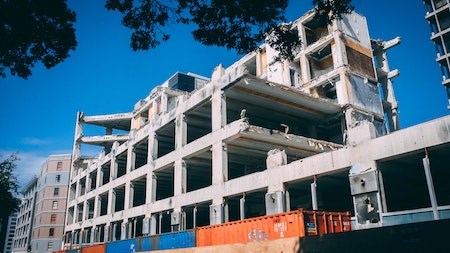If you are thinking of becoming a property investor, and have little to no money, there is still a way to start your property portfolio but using ‘Other People’s Money’ (OPM). This term is intrinsically linked to yet another acronym, BRRRR, which refers to a five-step process: buy, rehabilitate, rent, refinance, and repeat, which is a popular approach used by thousands of people globally.
BRRRR involves buying and flipping a distressed property, renting it out, and using refinance to fund future rental property investments.
What is a distressed property?
A distressed property is a usually a bank-assisted property sale, whereby owners can no longer afford their home loan repayment, or have identified a need to address their financial distress through a sale, so that the bank holding the bond can recover debt owed to it by the owner.
Distressed properties may be acquired in different ways. Initially such a property will be put on the market by the homeowner. Low offers, or those that don’t cover the outstanding bond, may be rejected.
If the sale is taking too long, the home loan provider may then, after approval by the High Court, sell the property at a public auction, also known as a ‘sale in execution’. Here too, the bank is aiming to recover the outstanding debt.
In the third step, the bank takes possession of the home and markets through a bank-appointed property practitioner, in the hope of recovering all, if not some, of the arrears.
There are warnings around distressed property purchases, such as whether the property is occupied or vacant. If occupied, it can take time and money to evict the occupiers but this can only be actioned once the distressed property has been registered in the name of the new owner, who is obligated to pay all monthly rates and taxes during the eviction process.
Rates and taxes, and levies if buying into a sectional title, may also be outstanding on the property, which become the new owners responsibility to settle. Often, but not always, a distressed property may be in disrepair and/or requires some investment into renovating, updating, or deep cleansing to bring it up to a standard that makes the property marketable.
OPM
Other People’s Money essentially refers to using leverage to buy real estate. It is a type of financing that investors tap into without using all of their own funds. It’s a great way to get started in real estate investing, especially if you are cash-strapped or unable to access the credit you require. However, you really need to know what you are doing before you tread this path, and research significantly to understand the best way to find the financial resources you will need.
Generally, though, you may consider a conventional bank loan, partner with a private lender (family, friend, business associate or other), or approach a hard money lender who is acquainted with the BRRRR method, however these types of lenders may charge a higher rate.
The BRRRR strategy
As mentioned, this is a five-step process. Assuming you have the financial resources, whether your own or through OTM, your first step is to ‘Buy’.
Buy:
Once you have identified a property, ideally a distressed one, and before you make an offer to purchase, you really need to do some math. In a worst-case scenario, you need to figure out how much is going to be invested in fixing up the property, and thereafter, estimate the after-repair value (ARV). This figure can be compared to recently sold and rental properties in the suburb to ensure that there will be a profit. Do not forget to factor in any potential outstanding rates and taxes, and future rates.
Rehabilitate:
The first improvements should be those that make the property compliant, such as ensuring the electricity system in the house is up to scratch, or the roof is in sound condition. The most popular value-adds when people are looking to buy or rent a house in the current environment, includes curb-appeal, updated kitchens and bathrooms, good security, an outdoor or patio/braai area, storage, good flooring, and a tidy garden. For renting purposes, the inclusion of a fast-speed Wi-Fi system, and energy efficient appliances are a bonus.
Rent:
It’s crucial that before you apply for any further finance, you find rental occupants. If this is not in your area of expertise, there are many rental agents who can undertake this for you, including checking the potential renter’s credit score, references from previous landlords, and will also undertake inspections to ensure the house is well-maintained.
Refinance:
With a rental tenant in place, it’s time to consider how to refinance the property. Essentially what this means is that you are looking to turn the equity in the property into cash. You can do this by securing a bond on the property if there is not yet one, or tap into the new value after rehabilitation. In this way you now have cash to invest in another property.
Repeat:
This is likely the most exciting step in the BRRRR method because you get to do this all over again. Using the equity from the first property, you can now seek a new property.
Pros and Cons of BRRRR
Like all things there are negatives and positives, and it's worth understanding the risks before you start the BRRRR method. The pros are obvious: there is the potential of a high return on the initial property investment; you are building equity during the rehabilitating phase; you can attract top-grade tenants if the property has been renovated to a high level; and when you are in the cycle with multiple rental properties, you can spread your risk and earn a decent passive income.
The con’s all relate to risk. If you use a short-term loan to finance the purchase of a property, you might over-leverage yourself, especially if you are undertaking renovations as you cannot anticipate problems that may not initially be evident. Also, during the rehabilitation phase, you will not be earning any income from the property, so it becomes a cost factor. There is also a waiting period when you apply for re-financing, and if the property is not valued more than the property has cost including renovations, you may not be regarded as a good risk.
You can mitigate risk by undertaking thorough and proper research, exploring all the alternatives, particularly those related to building/renovation costs. It is quite common for investors who have different skill sets to finance a property portfolio; for example, one investor has the cash, the other has building experience.
Provided you can identify a property where the optimal rental can be obtained, the BRRRR method can step you securely on a path of building a successful property portfolio.




